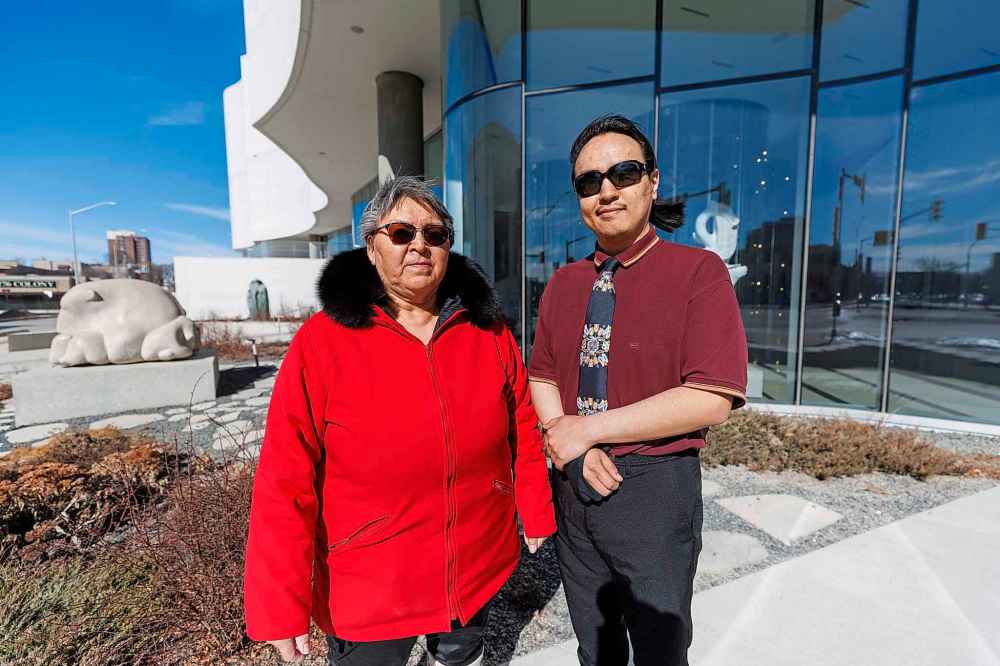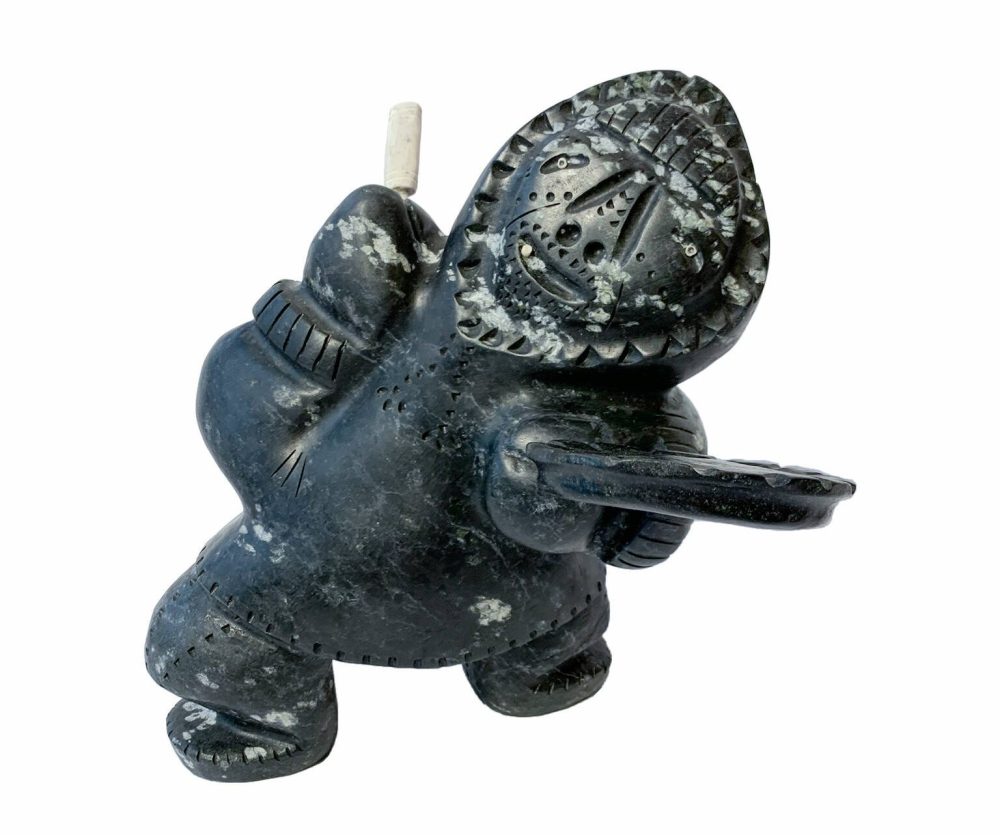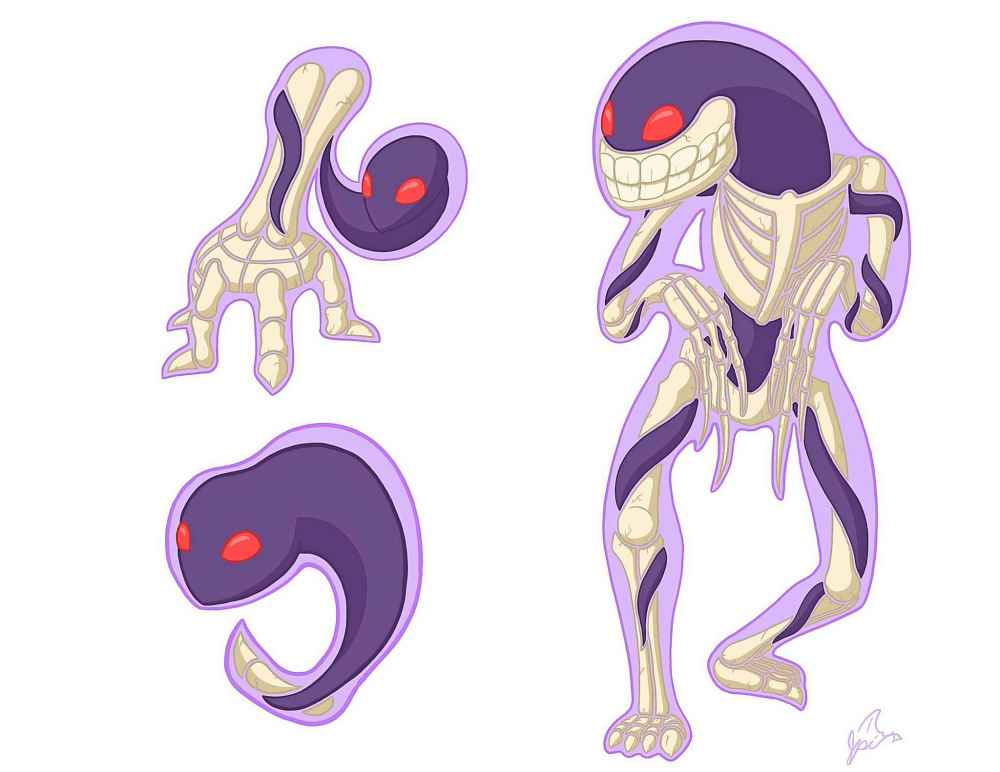Northern visionaries Work of Nunavut artists in WAG-Qaumajuq’s residency program showcases unique insights
Read this article for free:
or
Already have an account? Log in here »
To continue reading, please subscribe:
Monthly Digital Subscription
$0 for the first 4 weeks*
- Enjoy unlimited reading on winnipegfreepress.com
- Read the E-Edition, our digital replica newspaper
- Access News Break, our award-winning app
- Play interactive puzzles
*No charge for 4 weeks then price increases to the regular rate of $19.00 plus GST every four weeks. Offer available to new and qualified returning subscribers only. Cancel any time.
Monthly Digital Subscription
$4.75/week*
- Enjoy unlimited reading on winnipegfreepress.com
- Read the E-Edition, our digital replica newspaper
- Access News Break, our award-winning app
- Play interactive puzzles
*Billed as $19 plus GST every four weeks. Cancel any time.
To continue reading, please subscribe:
Add Free Press access to your Brandon Sun subscription for only an additional
$1 for the first 4 weeks*
*Your next subscription payment will increase by $1.00 and you will be charged $16.99 plus GST for four weeks. After four weeks, your payment will increase to $23.99 plus GST every four weeks.
Read unlimited articles for free today:
or
Already have an account? Log in here »
Hey there, time traveller!
This article was published 26/03/2025 (227 days ago), so information in it may no longer be current.
“Close your eyes. What do you see? Do you have a vision?” asks Martha Siqiniq Aupaluktuq-Hickes.
“I asked my husband that once. After four or five seconds, he said, “Nothing, it’s dark!” the artist says with a laugh. “I never knew there were people (who) don’t see visions.”
Preview
Meet the Artists in Residence
• WAG-Qaumajuq Artist-in-Residency
• Thursday, April 3, 4-7 p.m.
• ShopWAG, Winnipeg Art Gallery
While some literally can’t visualize things when they close their eyes (a condition known as aphantasia), others, such as Aupaluktuq-Hickes, are graced with an abundance of vision.
As well as drawing, the artist creates a host of outerwear (kamik, parkas, mitts and crocheted hats) and is one of three Nunavut artists participating in the Winnipeg Art Gallery-Qaumajuq’s second annual artist-in-residency program in collaboration with the Government of Nunavut.
The other two artists are Andrew Palongayak and Jamesie Itulu.
From the contemporary to the traditional, from pop culture-savvy animations and digital drawings to kaleidoscopic beadwork and ornate carvings, the group’s individual projects embrace a range of media and make use of WAG-Qaumajuq’s unique resources.
Itulu is working on a project that fuses Inuit folklore and the Pokémon universe; it’s a playful re-enchantment of the natural world through the lens of someone reared partially on anime and sci-fi.
“I look at my own culture and the wildlife there and think about what I can do to mix things up a little, either using an existing animal or looking at mythology,” says Itulu, from Pond Inlet, who got the idea after attending college in Ottawa. He now works professionally as a graphic artist.
Winnipeg Art Gallery-Qaumajuq’s artist-in-residency artists Martha Siqiniq Aupaluktuq-Hickes and Jamesie Itulu.
The creatures in Itulu’s work evolve through various stages, as Pokémon do, but with regional twists. Before becoming a fully-fledged Ptarmigan, one creature is depicted as an egg-like sculpture.
“It’s a beginner kind of carving, where it’s kind of just round and you etch details, compared to the advanced one, where it’s a lot more (intricate),” says Itulu, who has also been experimenting with animation and printmaking in his residency.
“Another thing that I’ve based this on: once in a while you’ll find round egg-shaped rocks just kind of buried or breaking the ground’s surface. In my culture, those little egg things will hatch into albino animals.”
While Itulu displays and talks about his work, Palongayak is working away outside on the WAG’s rooftop plaza, his hands filled with materials that are hard to make out from a distance.
Andrew Palongayak on the WAG rooftop.
A carver who works in stone, whale bone and caribou antler, Palongayak also creates furniture, hunting tools and jewelry. He’s using his residency not only to carve and create, but also to engage with WAG-Qaumajuq’s art collection and educational resources.
It is, after all, the world’s largest Inuit art gallery of its kind, with close to 14,000 Inuit art pieces in its permanent collection.
If one scans its grand Illuminated Vault, wanders its galleries or takes a trip to its basement vault, one may spot works by members of Aupaluktuq-Hickes’ and Itulu’s families, the artists say.
This is not an uncommon experience for Inuit people who visit the gallery.
Such discoveries can have a revelatory power for all. A casual visitor, if they are lucky enough to see Jessie Oonark’s boldly coloured, dreamlike drawings and wall hangings, for instance, will experience a northern art giant whose works appear in major collections around the world.
Andrew Palongayak carving.

“I just see her as my granny. She was always sewing and would let me sleep with her when she’s not sewing at night,” says Aupaluktuq-Hickes, whose family includes several significant artists.
Aupaluktuq-Hickes was born in 1959, a year after her grandmother arrived in Baker Lake from the Back River region. Aupaluktuq-Hickes relates stories about an influenza outbreak that scourged Back River in the early 1950s. Then, by the mid-1950s, many Inuit, including Oonark and her daughter, faced starvation in that region after caribou migration shifted directions.
“My mom and granny were one of the last ones picked up,” says Aupaluktuq-Hickes, who grew up and still lives in Baker Lake.
The four-week residency, which runs until April 4, is another example of WAG-Qaumajuq’s special relationship with the Government of Nunavut, based on a joint goal of learning and sharing in a reciprocal direction.
When it comes to Nunavut, Winnipeg’s reputation as “Gateway to the North” is hardly just about food and military flowing from our city into the region.
This piece by Jamesie Itulu is inspired by
Mahaha, a mischievous creature from Inuit
mythology sometimes known as a ‘tickle
monster.’ 
Culture, people, energy, natural resources and other exports come into the city from places such as Rankin Inlet, Baker’s Lake and Iqaluit and from across Northern Manitoba and Canada.
One of these exports is art — much of it priceless, culturally, but also a vital source of income for northern artists.
WAG-Qaumajuq is a key hub for this flux of art and knowledge between Winnipeg and Nunavut. The Nunavut government’s collection of Inuit art is housed at the gallery, which also just finished its annual series of workshops for Inuit heritage and culture workers from across Nunavut.
“We have this whole collection, and this is a really good opportunity for us to share that with the people and the families who created it and have that dialog between the two communities,” says Katryna Barske, public relations officer at WAG-Qaumajuq.
Aupaluktuq-Hickes, for her part, says right now she’s using her time at the gallery mostly to work on finishing a series of headbands. She pulls out her phone, swiping through pictures of her intricately beaded amauti, a parka she says is worn by Inuit women in the central and eastern Arctic.
While traditional non-beaded amauti are commonly worn by Inuit mothers to carry babies, the beaded amauti, a marvel of craftsmanship, is worn for celebrating special events.
“I’m a winter colour person; I like bright colours,” she says after describing the pastelly duffel socks she’s made for her niece and sister.
Sealskin headbands feature fleece liners and
Aupaluktuq-Hickes' beadwork.
Aupaluktuq-Hickes, who has worked as an electrician and civil servant, says she’s mostly created for her family in the past. She’s now taking more time for art.
“I did hats or mitts for gas money or for gifts. To me, it wasn’t work,” she says.
Textiles, carvings, fur work, sculptures and beadwork — all were woven into her everyday life, owing not just to their utility but the artistic prowess of her family and social circles.
But she realized that, like having a vivid mind’s eye, creativity isn’t a gift just everyone has.
As well as selling her work, Aupaluktuq-Hickes is now pursuing artistic opportunities outside Nunavut and is grateful for her residency in Winnipeg.
“This is what opens the doors. I’m so happy to be part of it.”
conrad.sweatman@freepress.mb.ca

Conrad Sweatman is an arts reporter and feature writer. Before joining the Free Press full-time in 2024, he worked in the U.K. and Canadian cultural sectors, freelanced for outlets including The Walrus, VICE and Prairie Fire. Read more about Conrad.
Our newsroom depends on a growing audience of readers to power our journalism. If you are not a paid reader, please consider becoming a subscriber.
Our newsroom depends on its audience of readers to power our journalism. Thank you for your support.
History
Updated on Thursday, March 27, 2025 11:12 AM CDT: Tweaks subheadline
